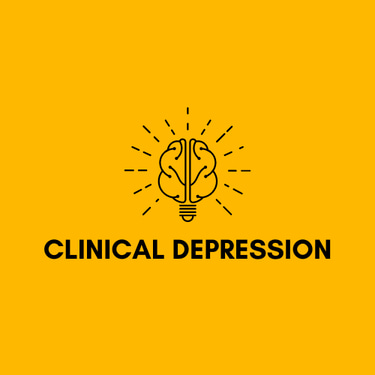For Questions: Text (833)233-0869
Telehealth Mental Health Treatment: A Revolutionary Solution for Anxiety and Depression


In recent years, mental health concerns like anxiety and depression have become increasingly prevalent. People across all age groups and demographics are seeking effective solutions to manage these conditions. One of the most innovative and accessible ways to receive mental health care is through telehealth mental health treatment. This approach offers many benefits, particularly for those dealing with anxiety and depression. In this article, we will explore how telehealth is revolutionizing mental health care, specifically for anxiety and depression, and why it’s a game-changer for people seeking help.
Understanding Anxiety and Depression
Before diving into how telehealth mental health treatment works, it’s essential to understand anxiety and depression.
What is Anxiety?
Anxiety is more than just feeling nervous or stressed occasionally. It's a persistent feeling of dread or worry, often accompanied by physical symptoms like increased heart rate, sweating, or trembling. For those with an anxiety disorder, these feelings can be overwhelming and can interfere with daily life.
Some common types of anxiety disorders include:
Generalized Anxiety Disorder (GAD): Characterized by excessive worry about various aspects of life, from finances to health.
Panic Disorder: Involves sudden, intense feelings of terror and panic attacks.
Social Anxiety Disorder: Involves intense fear or anxiety about social situations.
What is Depression?
Depression, on the other hand, is a mood disorder that affects how a person feels, thinks, and handles daily activities. It’s more than just sadness and can last for weeks, months, or even years without treatment. Some common symptoms include:
Persistent sadness or low mood
Lack of interest in activities once enjoyed
Fatigue or loss of energy
Difficulty concentrating
Changes in appetite or sleep patterns
Both anxiety and depression can be debilitating and often occur together, making effective treatment crucial.
The Rise of Telehealth Mental Health Treatment
What is Telehealth?
Telehealth refers to the use of digital communication technologies, such as video conferencing, phone calls, and mobile apps, to deliver health care services remotely. Telehealth mental health treatment involves using these tools to provide therapy, counseling, and psychiatric care without needing to visit a therapist’s office physically.
The rise of telehealth has been accelerated by several factors:
Technological Advances: With smartphones and high-speed internet, accessing telehealth services is easier than ever.
COVID-19 Pandemic: The global pandemic forced many health care providers to shift their practices online, including mental health services.
Increased Mental Health Awareness: As society becomes more aware of mental health issues, there’s a growing demand for accessible care.
Telehealth mental health treatment offers many advantages, particularly for those dealing with anxiety and depression, which often make it difficult to leave the house or interact with others face-to-face.
Why Telehealth Works for Anxiety and Depression
Convenience: One of the most significant benefits of telehealth mental health treatment is convenience. Patients can receive therapy from the comfort of their home, eliminating the need to travel to appointments. This is especially helpful for those with anxiety, as the stress of going to a new place or interacting with people can be overwhelming.
Accessibility: Telehealth services break down geographical barriers. Whether you live in a rural area with limited mental health resources or in a city with long waiting lists, telehealth provides access to a broader range of specialists. This is particularly important for anxiety and depression sufferers who may need immediate help.
Flexibility: Telehealth allows for more flexible scheduling, which is ideal for people with busy work schedules or those who have difficulty leaving the house due to depression or anxiety. You can schedule sessions during your lunch break, in the evening, or over the weekend without needing to adjust your entire day around an appointment.
Reduced Stigma: One of the barriers to seeking mental health treatment is the stigma associated with visiting a therapist. With telehealth, individuals can seek help without worrying about being seen walking into a mental health clinic, which can reduce feelings of shame or embarrassment.
Affordability: Telehealth services can sometimes be more affordable than traditional in-office visits. Some providers offer sliding scale fees or reduced rates for online sessions, making mental health care more accessible for those with financial limitations.
Types of Telehealth Mental Health Treatment for Anxiety and Depression
Telehealth can deliver various mental health treatments, each tailored to address different aspects of anxiety and depression. These include:
1. Cognitive Behavioral Therapy (CBT)
Cognitive Behavioral Therapy is one of the most effective treatments for both anxiety and depression. Through telehealth, therapists can guide patients in recognizing negative thought patterns and replacing them with more positive, constructive ways of thinking. CBT can be conducted via video calls, allowing patients to engage in therapy from the comfort of their homes.
2. Medication Management
For some individuals, managing anxiety and depression involves medication. Telehealth mental health treatment makes it easy to consult with psychiatrists who can prescribe medications remotely. Patients can schedule follow-up appointments to adjust dosages or discuss side effects without needing to visit an office.
3. Mindfulness-Based Therapy
Mindfulness techniques are effective in treating both anxiety and depression by teaching individuals how to focus on the present moment, reducing rumination and worry. Telehealth platforms often offer guided mindfulness therapy, either through one-on-one sessions with a therapist or pre-recorded modules.
4. Group Therapy
Telehealth isn’t limited to individual therapy. Group therapy sessions are also available online, providing patients the chance to connect with others who are dealing with similar issues. Group therapy can help combat the isolation often associated with depression and anxiety, and telehealth makes these sessions more accessible to a wider range of people.
5. Crisis Counseling
In situations where someone is experiencing severe anxiety or depression symptoms, crisis counseling can be life-saving. Telehealth mental health treatment providers often offer immediate crisis support through text, phone calls, or video sessions, helping patients in moments of acute distress.
Overcoming Challenges in Telehealth Mental Health Treatment
While telehealth mental health treatment offers many benefits, it’s not without its challenges. Here’s how patients and providers can overcome them:
1. Technical Difficulties
Not everyone is comfortable with technology, and some individuals may find it challenging to navigate telehealth platforms. However, many providers offer user-friendly apps and websites, and some even provide technical support to help patients get started.
2. Privacy Concerns
Some patients may worry about the privacy of their sessions. However, most telehealth platforms use secure, HIPAA-compliant technologies to ensure patient confidentiality. It’s important to check that your provider uses a secure platform and to find a quiet, private space for your sessions.
3. Insurance Coverage
Although many insurance companies now cover telehealth mental health treatment, not all do. It’s essential to check with your provider to confirm whether your insurance will cover telehealth services or if there will be additional costs.
How to Get Started with Telehealth Mental Health Treatment
If you or someone you know is struggling with anxiety or depression, telehealth mental health treatment could be the solution. Here’s how to get started:
Research Providers: Look for licensed therapists, counselors, or psychiatrists who offer telehealth services. Many platforms specialize in matching patients with providers based on their needs.
Check with Insurance: Confirm with your insurance company whether they cover telehealth mental health services and what your co-pay will be, if applicable.
Set Up a Secure Space: Find a quiet, private space in your home where you can have uninterrupted sessions. Make sure you have a stable internet connection and a device with a camera and microphone.
Schedule an Appointment: Once you’ve selected a provider, schedule an initial consultation to discuss your symptoms and treatment goals.
Conclusion: The Future of Mental Health Treatment
Telehealth mental health treatment is not only a convenient alternative to traditional therapy but also an effective solution for those suffering from anxiety and depression. By making mental health care more accessible, flexible, and affordable, telehealth has the potential to help millions of people who may have otherwise struggled to receive the care they need. Whether you’re dealing with mild anxiety or severe depression, telehealth offers a lifeline to better mental health.
Embracing this new way of accessing mental health services can be a step towards recovery, providing a sense of empowerment and hope for a healthier future. If you’re seeking mental health care, now is the perfect time to explore what telehealth has to offer.
©2025
Clinical Depression
For Questions: Text
(833) 233-0869
